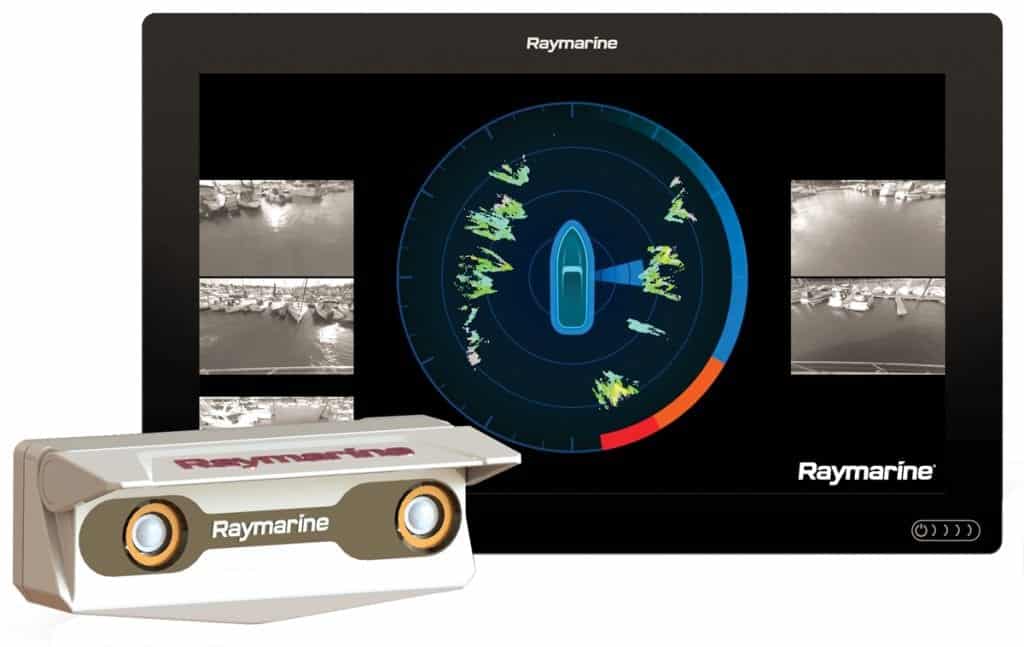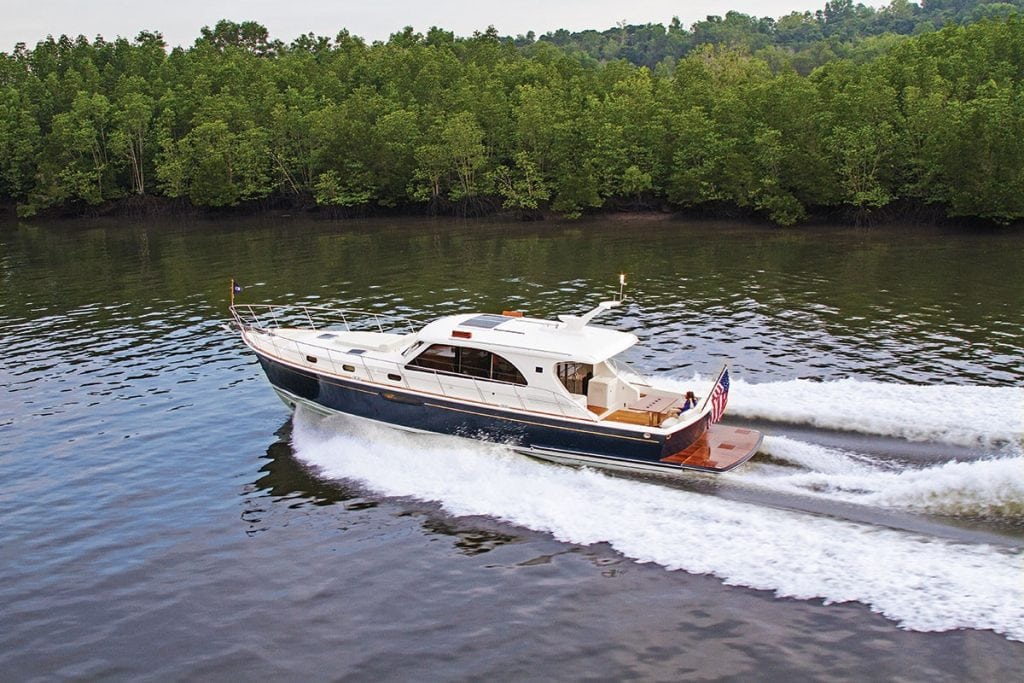Navico Helm Display
A new Navico helm display and AI technology make boating a little easier—and safer.
The creativity of engineers and designers continues to create new technologies across many industries. Those that find their way into the maritime sector usually result in a simpler and safer boating environment.
The American Boat & Yacht Council (ABYC) is an independent consensus-based body of industry experts who are tasked to develop standards that “protect the safety of the boating public,” and also, as noted by some industry reps, to make boating easier, which draws more people into the boating lifestyle. These two new electronic systems are
perfect examples of how innovation can improve the overall boating experience.
On Display
Visitors to the Miami International Boat show may have noticed a streamlined helm display on quite a few new boats being introduced at the show. That’s because Navico, the parent company of Lowrance, Simrad, B&G, and C-MAP, has launched its new Information Display. Branded as a new category of marine technology, the Simrad Information Display introduces a new manner of integration and marks the
first significant evolution of the multifunctional display.
The bonded-glass display has a sleek design that houses a powerful integration hub with a new, configurable graphic interface to simplify monitoring and control of onboard
systems. The system is currently installed by the boat manufacturer during the build process and features pre-defined contextual modes that display all relevant data pertinent to the boat’s current operating situation such as showing the most relevant controls and alarms together on a full-page audio screen when at anchor.
In Cruise mode, only the critical data is shown on the display and allows the captain to see the necessary information while underway and not have to sort through a clutter of helm instruments to find what matters. When engaged in the Water Sports mode, the driver can keep an eye on a water skier by integrating a rear-view camera display on the screen along with the most relevant charts, and the process of system checks before you leave the dock in the Prepare Mode is easier with digital switches and level indicators.
Custom modes are also easily configured by the builder not only to accentuate the
utility of an individual vessel but also to complement an owner’s requirements, such as off-shore sportfishing, passage making or just heading out for a leisurely day on the water.
The display is available with a choice of Lowrance, Simrad or B&G electronics, and each option includes one or more displays bridged together to function as one integrated system. The centralized hub uses ethernet, Wi-Fi, and Bluetooth connectivity along with Sonar, USB, CAN and NMEA 2000 ports to connect with all onboard systems. In addition, along with the Information Display technology, the hub installation is designed to simplify equipment upgrades and ensure compatibility over several model years for builders as well as provide owners upgrade options.
“Our information displays mark a new level of convenient access to navigation and critical vessel data and a new standard in boating,” says Leif Ottosson, Navico CEO. The display was recognized by the DAME Design Awards jury at the METS trade show in 2018 because it solves the issue of having multiple different pieces of marine electronics from different vendors spread across the dash of the boat working independently.
Makes Sense
One of the most stressful maneuvers for those at the helm is docking, but with Raymarine’s new DockSense assisted docking technology, slipping in alongside between two boats becomes routine. The DockSense system uses FLIR machine vision stereo camera technology and video analytics combined with a central processing module, the
DockSense App running on Raymarine’s Axiom navigation display and an advanced joystick piloting system to create a Virtual Bumper zone around the vessel and assist boat owners in tight-quarters docking.
Many at the Miami International Boat Show saw the recreational marine industry’s first
“intelligent object recognition and motion sensing assisted docking solution” in action.
In a collaboration between Brunswick and FLIR Systems, DockSense was featured on a 33-foot Boston Whaler Outrage center console with twin Mercury Verado engines with Joystick Piloting for Outboards that provided assisted steering and throttle commands. DockSense continuously monitors the vessel’s surroundings and feeds the advanced autonomous piloting assist system with real-time detection of objects like pilings, other vessels and the dock. In the demonstration, five cameras were positioned
around the boat (two on the bow, one on each side on the console top, and on the stern).
The system incorporates a global positioning system and attitude heading reference
system position sensing technology to compensate for the effects of wind and currents. Once the dock is detected within the bumper zone, the system takes control for a smooth
positioning close enough to step off yet not hit the dock.
Raymarine’s DockSense is still in the development phase and will continue to improve as Raymarine and partner companies refine the processes, but there’s no doubt the technology will be available in the coming years.
By Steve Davis, Southern Boating
March 2019













